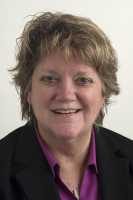25 Aug Physician Burnout Continues Unabated, With Clinicians Saying Facilities Aren’t Doing Enough to Address It
MedicalResearch.com interview with:
Diane Hayes, Ph.D.,
President and co-founder, InCrowd
Areal time market intelligence service to the life sciences
MedicalResearch.com: What is the background for this survey?
Response: Physician burnout is a significant concern across the healthcare continuum, as Affordable Care Act (ACA) measures change the nature of doctoring, and as at least 30 major teaching hospitals at least 30 major teaching hospitals undertake initiatives aimed at reducing burnout ahead of its potential impact on patient safety and quality outcomes. Numerous studies have documented the issue.
We thought it would be instructive to use InCrowd’s mobile microsurvey platform for a mid-year snapshot of burnout sentiment. The microsurvey used the Maslach Burnout Inventory of symptoms to determine respondents who could be considered to be experiencing burnout—the same index as used by the widely cited Mayo Clinic and MedScape studies. We also asked if facilities are addressing the issue, a topic not always covered.
MedicalResearch.com: What are the main findings?
Response: 57% of the primary care and emergency medicine doctors surveyed by InCrowd in May 2016—two of the specialties reporting the highest burnout rates—said they have personally experienced burnout. This level mirrors the 54.4% burnout level found by the Mayo Clinic study of December 2015, and the range of between 40-55% across 25 clinical specialties in the MedScape Lifestyles study of January 2016. Thirty-seven percent of respondents in InCrowd’s survey said they felt frustrated by their work a few times weekly, or every day. When asked if they would recommend a career in medicine to a child or family member, 58% of respondents said they either were unsure, or knew they would not.
What’s more, 74% of US primary care physicians (PCPs) and ER doctors do not feel their health care facility or practice is taking effective steps to address and prevent burnout.
Burnout among those physicians working outside of hospitals—at 52% of respondents—was somewhat less than the 63% aggregate level among physicians working in hospitals. Physicians who had been practicing for 21 or more years reported slightly lower burnout levels—at 53%—than physicians practicing 1 to 10 years, or 10 to 20 years—at 60%.
Time pressures were the top cause of physician burnout according to qualitative verbatim responses. Electronic medical records (EMR) were the second most frequently reported stressor. Verbatim comments reinforced that for many, the passion that brought them to medicine has gotten lost in the system.
When asked how they’d address burnout, the top three suggestions were mandatory vacation or half days, reduction of patient volume, and increased staffing (nurses, medical assistants and administrative assistants). Among physician respondents who are in private practice, the number one suggestion was to reduce patient volume—as compared to hospital-based physician respondents, whose top suggestion was to increase support staffing.
Many respondents recommended direct primary care (DPC), a newly developed model that replaces the longstanding fee-for-service model with a flat monthly fee that covers comprehensive primary care services. However, DPC remains an emerging model, with only 16 states adopting legislation exempting DPC providers from insurance regulation.
MedicalResearch.com: What should readers take away from your report?
Response: A stubborn undercurrent of physician burnout exists as documented elsewhere, and it isn’t going away. Furthermore, our microsurvey suggests that the negative personal and professional impact on physicians is pervasive and physicians are looking to their facilities to address burnout in an impactful way, not just monitor the issue from the sidelines. Another fly in the ointment related to burnout is that smaller private practices might not have the tools to do so at this time.
MedicalResearch.com: Is there anything else you would like to add?
Response: We’ll be monitoring this important topic as healthcare executives work to make sure those who keep us well, are also keeping themselves intact, too.
Citation:
InCrowd microsurvey discussing:
Physician Burnout Remains High, and Doctors Say Their Hospitals Aren’t Addressing It
Note: Content is Not intended as medical advice. Please consult your health care provider regarding your specific medical condition and questions.
More Medical Research Interviews on MedicalResearch.com
[wysija_form id=”5″]
Last Updated on August 26, 2016 by Marie Benz MD FAAD

